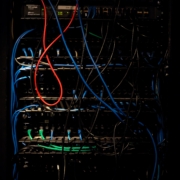The Art and Science of Virtual Assistant Dialogue Design
/in Admin Support Virtual Assistant, Virtual Assistant in Canada, Virtual assistant in USA /by admin
In the realm of virtual assistants, the magic happens not just in their functionality but in the conversations they hold. Behind the scenes, skilled developers work on the art and science of dialogue design to make interactions with virtual assistants feel natural and intuitive. In this article, we delve into the fascinating world of crafting conversations with a virtual assistant, exploring the intricate balance between artistry and algorithms.
The Human Touch in Dialogue Design: Virtual assistants are becoming more than mere tools; they are companions, personal assistants, and even friends. Achieving this level of engagement requires a deep understanding of human communication. Dialogue designers, armed with linguistic expertise, strive to infuse a human touch into the way virtual assistants speak and comprehend language.
In an exclusive interview with a seasoned dialogue designer, we learn about the challenges and rewards of creating dialogue that resonates with users. The developer emphasizes the importance of empathy, cultural nuances, and context in crafting conversations that feel natural and relatable.
Balancing Act: Artistry and Algorithms: Crafting conversations for virtual assistants involves a delicate balance between artistry and algorithms. On one hand, developers harness the power of artificial intelligence and natural language processing to understand and respond to user input. On the other, they employ creative flair to design responses that go beyond mere information provision, aiming for a conversational flow that mimics human interaction.
The article explores how developers navigate this balancing act, leveraging machine learning models while injecting creativity into the dialogue design process. The goal is to make virtual assistants not only informative but also engaging and enjoyable to converse with.
Adapting to User Preferences: No two users are alike, and dialogue designers must account for diverse preferences and communication styles. Whether a user prefers a formal tone or a more casual, friendly approach, virtual assistants should adapt to provide a personalized experience. Our interview sheds light on the strategies employed by developers to create adaptable and user-friendly dialogue systems.
The Evolution of Conversational AI: As technology advances, so does the field of conversational AI. Developers are continually exploring ways to enhance virtual assistant conversations, incorporating sentiment analysis, humor, and even emotional intelligence into their designs. The article discusses the evolving landscape of dialogue design and the exciting possibilities that lie ahead.
Conclusion: Crafting conversations for virtual assistants is a dynamic blend of linguistic finesse and technological prowess. The dialogue design process is an ever-evolving journey, where developers strive to create virtual assistants that not only understand what we say but also how we say it. As we look to the future, the art and science of virtual assistant dialogue design will play a pivotal role in shaping the way we interact with AI companions.
To explore how we can assist in transforming your business, contact us BOOK A FREE CONSULTATION at 1-877-263-7064 or click here to schedule a meeting with us. Visit our website by clicking here.









